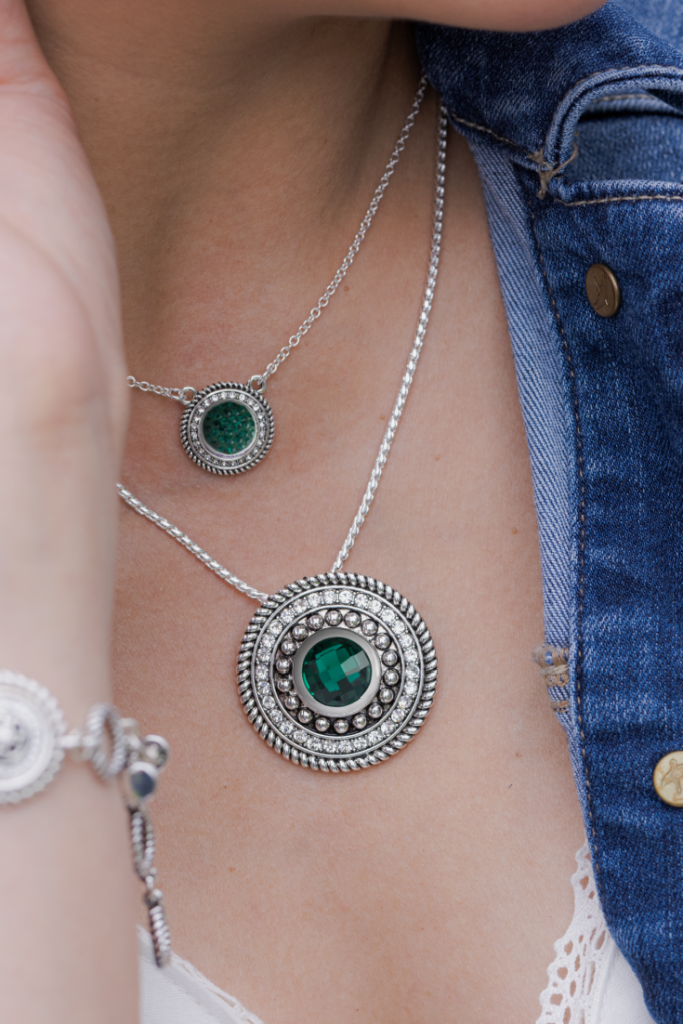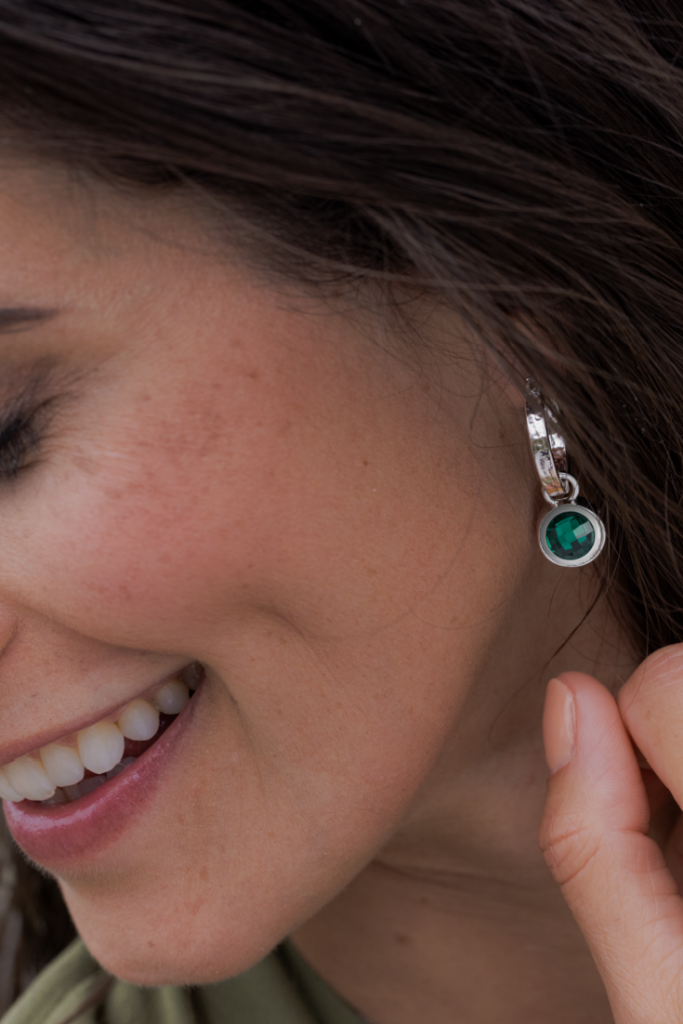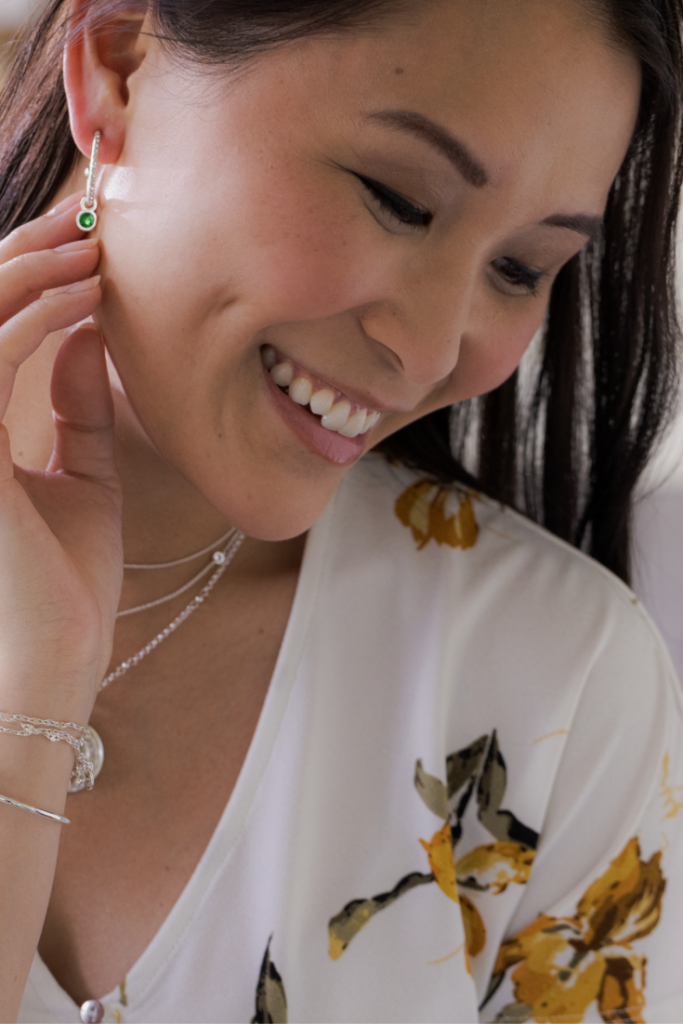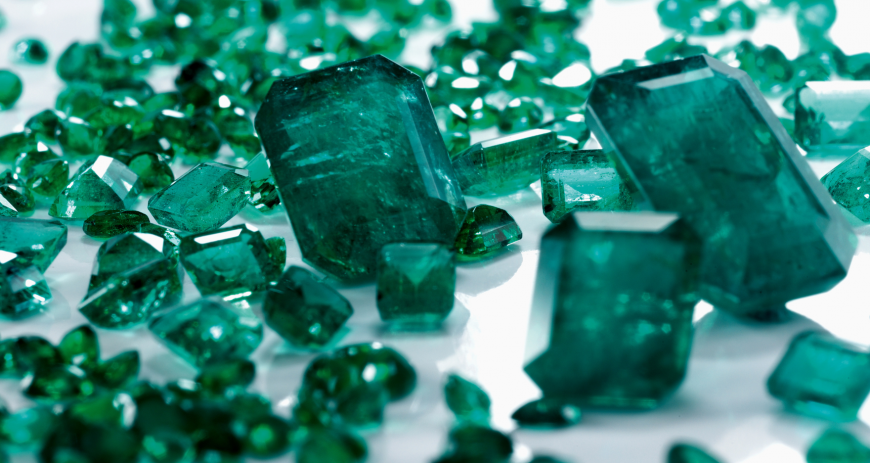 What Is the May Birthstone?
What Is the May Birthstone?
The May birthstone is the emerald. The emerald is part of a very popular group of colored gemstones called the Big 3: the emerald, the ruby, and the sapphire (“May Birthstone”). In addition to being the May birthstone, the emerald is traditionally used to commemorate the 20th and 35th wedding anniversary (“May Birthstone”).
What Are the Characteristics of the May Birthstone?
Like the March birthstone, the aquamarine, the May birthstone is a variety of beryl, a mineral that “grows with six sides and up to a foot in length” (“May Birthstone”). Gemologists define emeralds by their deep, rich green color. The deeper or more green an emerald is, the more valuable it is. Gemologists evaluate the color of an emerald based on three factors: hue, tone, and saturation.
Hue is “what we usually think of when someone mentions color” (“May Birthstone”). Emeralds need to have a dominantly green hue; they can have some blue or very minor levels of yellow.
 Tone is how light or dark the color is, and saturation is how strongly the color is shown. For example, if an emerald’s tone and saturation are too light, gemologists don’t consider it an emerald; they simply refer to it as a green beryl. The very finest emeralds have a strong green or blueish-green hue with very vivid saturation and a medium to medium-dark tone (“May Birthstone”).
Tone is how light or dark the color is, and saturation is how strongly the color is shown. For example, if an emerald’s tone and saturation are too light, gemologists don’t consider it an emerald; they simply refer to it as a green beryl. The very finest emeralds have a strong green or blueish-green hue with very vivid saturation and a medium to medium-dark tone (“May Birthstone”).
What Is the History of the May Birthstone?
The word “emerald” actually comes from smaragdos, the ancient Greek word for “green gem” (“May Birthstones”).
Egyptians mined emeralds as early as 330 BC, but some historians have estimated that there are emeralds as old as 2.97 billion years (“May Birthstone”)! We know Cleopatra loved emeralds. During her reign, she even took ownership of all the emerald mines in Egypt. The Egyptians would use emeralds in their jewelry, as well as in their burials, often burying emeralds with monarchs to protect them (“May Birthstone”).
Pliny the Elder, a Roman author who died in the 79 CE eruption of Mt. Vesuvius, wrote about emeralds in his Natural History: “Nothing greens greener.” He also stated that the May birthstone had healing properties that helped gem cutters: “[They] have no better method of restoring their eyes than by looking at the emerald, its soft green color comforting and removing their weariness and lassitude” (“May Birthstones”). Science has actually now proven this to be true: the color green relieves eye strain and stress (“May Birthstones”).
 Others believed the emerald birthstone had magical properties. They thought if you placed it under your tongue, you could see into the future; while others believe it could make you a powerful speaker, and that it also would expose lovers who told lies (“May Birthstones”).
Others believed the emerald birthstone had magical properties. They thought if you placed it under your tongue, you could see into the future; while others believe it could make you a powerful speaker, and that it also would expose lovers who told lies (“May Birthstones”).
The Spanish also revered May’s birthstone as seen by the legendary Crown of the Andes. The crown’s largest emerald was named after the last Inca emperor, Atahualpa. Lore states that conquistador Francisco Pizarro stole the Atahualpa Emerald from the emperor. That emerald was recovered from the sunken 17th century Spanish galleon Nuestra Señora de Atocha. It’s just a small fraction of the riches that were sent to Spain from the colonists in the New World (“May Birthstones”).
Today, the rich and famous still treasure the emerald, with Elizabeth Taylor’s famous emerald pendant selling in 2011 for $6.5 million (“May Birthstone”)!
Where Can You Find the May Birthstone?
While you can find emeralds all over the world, Colombia has been the main source for more than 500 years. In fact, Colombian emeralds are considered the standard by which all emeralds are measured (“May Birthstones”).
However, over the years, people have come to associate certain emeralds with their mining locations. The emerald’s trade names “were selected for the sources whose product typifies the color being described” (“May Birthstone”). A word of caution, though; just because people refer to an emerald by a specific trade name doesn’t guarantee that the emerald came from that specific location.
- Colombia: A Colombian emerald possesses the blueish-green hue that gemologists consider the ideal color.
- Brazil: Brazilian emeralds have lighter tone, but are still dark enough for gemologists to consider them emeralds.
- Zambia: Zambian emeralds have a darker tone and more blue in their hue. People who are drawn to cooler colors tend to like Zambian emeralds.
- Sandawana: Sandawana emeralds tend to have a very strong green hue due to high levels of chromium (“May Birthstone”).
To find your perfect May birthstone, visit StyleDots.com today!
Learn more about birthstones in our Birthstone Guide.

